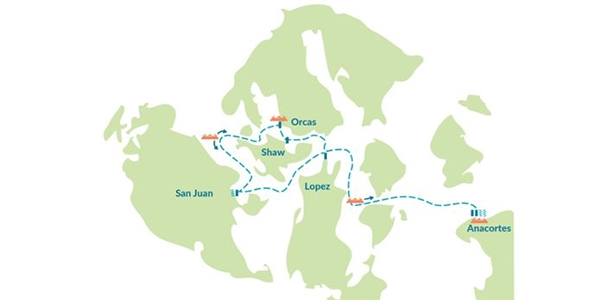By Bea vonTobel
(From Airport Business)
People often ask me if I don’t hate having to travel from small airports … the answer is no, not at all. I like smaller airports.Because I live in the boondocks (Erwin,TN isn’t the end of the world, but it’s a short drive from here) people often ask me if I don’t hate having to travel from small airports, rather than the mega hubs. The answer is no, not at all. I like smaller airports.
Smaller airports are just flat out more convenient. Parking is cheaper and quicker, check-in is quicker, and one doesn’t have to walk as far to reach the gate.
Yes, departing from a smaller airport does mean that I have to connect through Megalopolex, but I don’t have to drive through city traffic to get to Magalopolex, or pay the borderline rapacious parking fees there. All I have to do is change airplanes.
Not long ago, while traveling during one of my “bad back” experiences, I arranged in advance for one of those courtesy carts to meet me in Megalopolex and deliver me to the gate for my connecting flight. It didn’t happen. Earlier this week, my son was traveling with his four-year-old son — who is, BTW, my only grandchild and a handsome genius to boot — with only 35 minutes to change airplanes at Megalopolex. Again, we arranged in advance for a cart to meet his flight in Megalopolex. Again, it didn’t happen.
The above article appeared this week in an online version of Airport Business, a trade publication. Ralph Hood is a well-traveled writer and speaker on aviation topics, and one who can afford to use his frequent-flyer miles to travel from point A to point B—and sometimes points C, D, and E before he returns to his rural home. His preference for getting to his major hub from his rural home via his local airport is a concept the Port of Orcas is also anxious to promote.
The travel industry summarizes the challenges smaller airports face in retaining and enhancing existing air service, noting that the proximity to competitive alternatives, combined with relatively good highway access (or a ferry ride plus driving) results in the phenomenon defined as ‘leakage’—a loss of Orcas’s ‘natural’ traffic base to another airport (SeaTac). Because of the small population base on Orcas, the competitive challenge to remain financially profitable is a constant threat to continued scheduled and non-scheduled air service.
Orcas also suffers from a seasonal differential; ‘tourist season’ traffic is predominantly inbound (as it is for any seasonal tourist destination). Air carriers change their service schedules to adapt to the seasonal changes, which results in fewer arrivals and departures during the off-seasons.
The length of the runway prohibits some VLJ (very light jet) traffic from supplying service to the island. This concept, coupled with a general public attitude of preferring jet service to turbine (propeller) aircraft, may inhibit some residents from using the available services to travel to the larger hub. With the upcoming certification of more advanced approach and departure navigation procedures at Orcas, service will become more regular and safe, even during times of bad weather. Air carriers appreciate the ability to maintain their schedules regardless of weather, and count missed flights with their attendant costs of delivering passengers to the ferry landing or a floatplane dock as lost and unrecoverable revenue.
The Port of Orcas will continue to research the factors which contribute to the success or failure of continued air service to and from the island, and soliciting your input is a very important part of that research. Please stop by the terminal to share in person, or send comments via e-mail to orcasairport@rockisland.com
Bea vonTobel is Manager of the Port of Orcas
**If you are reading theOrcasonian for free, thank your fellow islanders. If you would like to support theOrcasonian CLICK HERE to set your modestly-priced, voluntary subscription. Otherwise, no worries; we’re happy to share with you.**







